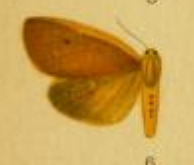
Acrapex carnea is a species of moth of the family Noctuidae first described by George Hampson in 1905. It is found in Africa, including South Africa.

Amolita irrorata is a species of moth in the family Erebidae first described by George Hampson in 1910. The species is found in South America, including Paraguay and Brazil. Its wingspan is 26–32 mm.
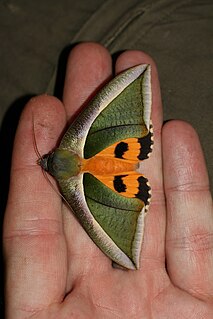
Eudocima salaminia, the green fruit-piercing moth, is a moth of the family Erebidae. The species was first described by Pieter Cramer in 1777. It is found from India, and across south-east Asia to the Pacific Islands. In Australia it occurs in the Northern Territory, Queensland and New South Wales. The adult is a fruit piercer.
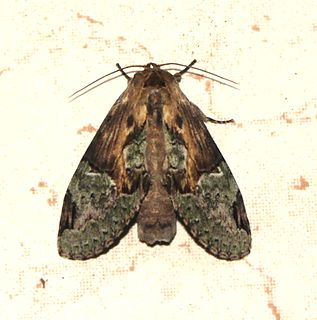
Chadisra bipars is a moth of the family Notodontidae. It was described by Francis Walker in 1862 and is found in the Indomalayan realm.

Oraesia emarginata is a species of moth of the family Erebidae first described by Johan Christian Fabricius in 1794. It is found in Australia, New Caledonia, Indonesia, New Guinea, Pakistan, the Philippines, India, Sri Lanka, Sulawesi, Taiwan, China, Japan, Korea and Nepal as well as Eritrea, Ethiopia, Kenya, Namibia, Nigeria, South Africa, Tanzania, the Gambia, Uganda, Oman and Yemen.
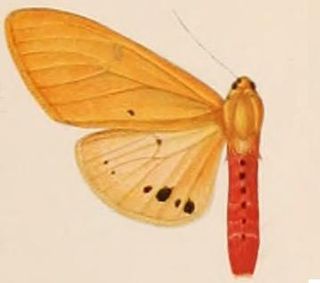
Spilosoma eldorado is a moth of the family Erebidae. It was described by Walter Rothschild in 1910. It is found in eastern India and Sri Lanka.
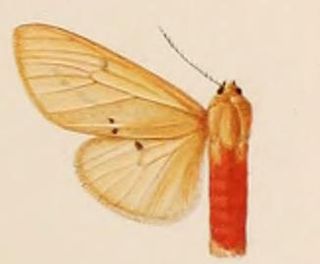
Spilosoma semperi is a moth of the family Erebidae. It was described by Walter Rothschild in 1910. It is found on Sumatra and Peninsular Malaysia.
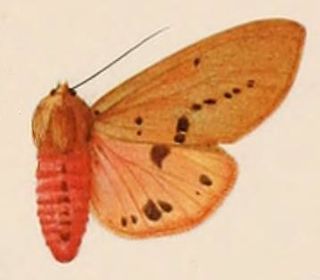
Spilosoma cajetani is a moth of the family Erebidae. It was described by Walter Rothschild in 1910. It is found on Seram Island.
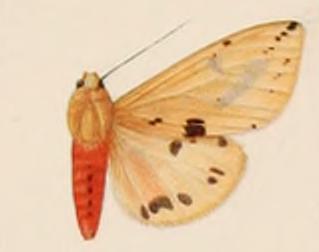
Spilosoma roseata is a moth of the family Erebidae. It was described by Walter Rothschild in 1910. It is found on Java in Indonesia.

Spilosoma alberti is a moth of the family Erebidae. It was described by Walter Rothschild in 1914. It is found on Papua New Guinea, where it is restricted to mountainous areas at high altitudes ranging from 1,200 to 2,150 meters.

Spilosoma batesi is a moth of the family Erebidae. It was described by Walter Rothschild in 1910. It is found in Nigeria, Cameroon, Congo and Zaire.
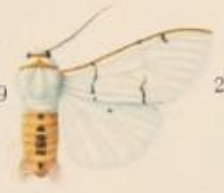
Spilosoma buryi is a moth in the family Erebidae. It was described by Walter Rothschild in 1910. It is found in Ghana and Nigeria.

Spilosoma karschi is a moth in the family Erebidae. It was described by Max Bartel in 1903. It is found in the Democratic Republic of the Congo, Ghana, Guinea-Bissau, Malawi, Nigeria, Togo and Uganda.

Spilosoma latiradiata is a moth in the family Erebidae. It was described by George Hampson in 1901. It is found in South Africa and Zambia.

Spilosoma melanimon is a moth in the family Erebidae. It was described by Paul Mabille in 1880. It is found in Madagascar.

Spilosoma nigrocastanea is a moth in the family Erebidae. It was described by Walter Rothschild in 1917. It is found in Malawi.
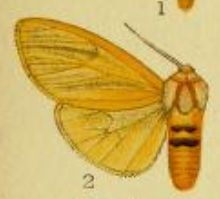
Spilosoma occidens is a moth in the family Erebidae. It was described by Walter Rothschild in 1910. It is found in the Democratic Republic of the Congo, Ghana, Nigeria, Senegal and Sierra Leone.
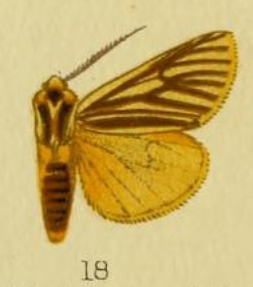
Spilosoma euryphlebia is a moth in the family Erebidae. It was described by George Hampson in 1903. It is found in South Africa.
Roxita adspersella is a moth in the family Crambidae. It was described by Pieter Cornelius Tobias Snellen in 1893. It is found in Sri Lanka.
Semioptila latifulva is a moth in the Himantopteridae family. It was described by George Hampson in 1920. It is found in Tanzania.
